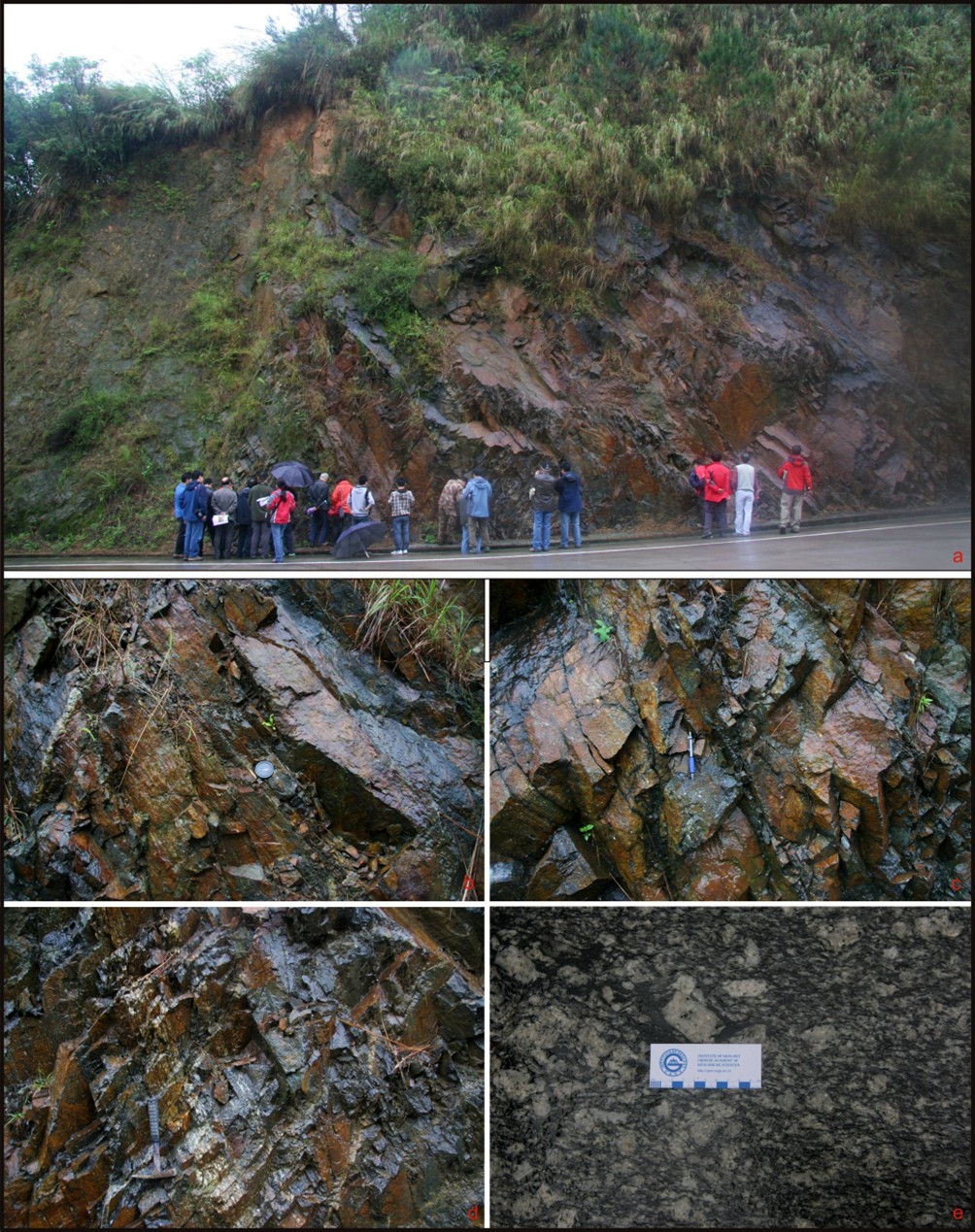Yunkai Gr
Type Locality and Naming
Western Guangdong. The Yunkai Gr was named by the Guangdong Compiling Group for the Regional Stratigraphic Scale (1987). The type section is a composite of three sections, which are located in Huanghuajiang, in Hengkengyin and in Luoche in Xinyi County, Guangdong Province. Consists of upward succession of Luoxia Fm, Fengdongkou Fm and Lankeng Fm.
Synonym: (云开群)
Lithology and Thickness
Flysch and volcanics. After the restoration to protolith rocks, the Yunkai Gr is interpreted as a series of former thick flyschoid clastic formations of neritic facies which are now characterized by deeply metamorphosed rocks with volcanic rocks and metamorphosed phosphorus and iron ores. The Yunkai Group is subdivided into an upward succession of Luoxia Fm, Fengdongkou Fm and Lankeng Fm:
Lankeng Fm, the upper formation, was named by Zhou Guoqiang, and Zheng Youming in 1993 and published by Zhou Guoqiang in 1994. The naming section is in Sanjiacun-Dapi, Lankeng, Xinyi County. The formation is mainly composed of greyish-dark-brown and purple-red quartz mica schist, mica quartz schist, accompanied by feldspar quartz sandstone, greyish apatite-bearing schist and siliceous phosphorite, occasionally sandwiched with grey-black Mn-bearing quartz schist or manganiferous thin-bedded ferruginous quartzite, and dolomitic marble lenses, and a layer of in-equigranular feldspar quartz sandstone in the base. It contacts conformably with the underlying Fengdongkou Fm The thickness varies from 647 to over 841 m.
Fengdongkou Fm, the middle formation, was named by Nan Yi in 1991, and published in 1994. The naming section lies in Tandong-Fengdongkou, Xinyi County, Guangdong Province. The formation is mainly interbedding of grey-green meta-siltstone, feldspar-quartz sandstone with grey-green to grey-black phyllite, sandwiched with grey-black carbonaceous sericite quartz phyllite and minor phyllitoid shale. The formation, 831 m thick, contacts conformably with underlying Luoxia Fm. The formation is distributed mainly in Guizi, Xinyi County and in Luoding County.
Luoxia Fm, the lower formation, was named by Nan Yi in 1991, and published in 1994. The naming section is in Luoxia-Tongguping, Xinyi County, Guangdong Province. Lower part of the formation is dominated by grey-green, brown-grey mica-quartz schist, quartz-mica schist and quartzite, occasionally accompanied with actinolite-tremolite diopsidite, sericite schist and siltstone. Upper part consists of garnet-bearing quartz mica schist and quartzite, sandwiched with amphibolite, actinolite epidotite, metamorphosed basic volcanic rock, mica-quartz schist, meta-sandstone and siltstone. Its basal boundary is not cropped out. The Luoxia Fm, 1307 m thick, is distributed mainly in Guizi-Luojing, and it is exposed also around Fuhe-Xiangdong, Xinyi County, Guangdong Province. It is sandwiched with iron ore body in Dadongtian and Yunli. It is attributed to the Jixian Period.
Relationships and Distribution
Lower contact
The basal boundary of the Yunkai Group (base of Luoxia Fm) does not crop out.
Upper contact
The top of the Yunkai Group (top of Lankeng Fm) is disconformably overlain by the Shawanping Fm (Qingbaikouan = Tonian; not in Lexicon) or overlain by Cambrian.
Regional extent
Western Guangdong. The group is distributed mainly within Xinyi and Luoding Counties.
GeoJSON
Fossils
Schist bands in the lower part have microplants, such as Leiopsophosphaera minor, L. solida, Trachysphaeridium sp., Polyporata obsoleta. Abundant microplants occur in the middle and upper part of formation: Leiominuscula incrassata, L. minuta, Leiopsophosphaera minor, L. pelucidus, Bavlenella faveolata, Protoleiosphaeridium sorediforme, Pseudozonosphaera nuclata, Trachysphaeridium hyalinum etc.
Age
Depositional setting
Additional Information
